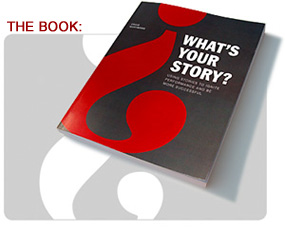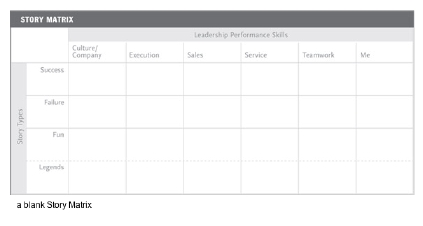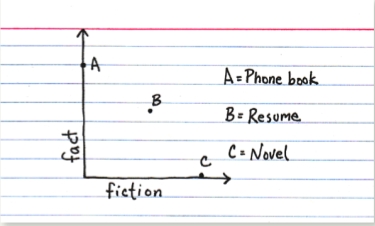 Craig Wortmann is the author of What’s Your Story?, which describes the “powerful impact stories have on the three most common performance challenges—leadership, strategic selling, and motivation.”
Craig Wortmann is the author of What’s Your Story?, which describes the “powerful impact stories have on the three most common performance challenges—leadership, strategic selling, and motivation.”
Wortmann writes:
While the technique of telling stories is the oldest form of communication, it’s also the one form that rises above the din of our information-saturated environment and delivers messages in a way that connects with people, bringing ideas to life and making them actionable and memorable.
A piece of the book that especially interests me is the Story Matrix, which I recommend in my book Tell Me About Yourself: Storytelling that Propels Careers as a tool for planning stories to depict in career portfolios.
 At right is how Wortmann explains the Story Matrix (edited; see more on his site). Instead of “leader’s stories,” I like to think of the broader term “accomplishments” – or instead of stories that depict leadership, choose any skill you want to highlight in your career search:
At right is how Wortmann explains the Story Matrix (edited; see more on his site). Instead of “leader’s stories,” I like to think of the broader term “accomplishments” – or instead of stories that depict leadership, choose any skill you want to highlight in your career search:
The Story Matrix is a simple spreadsheet that places a leader’s stories into different categories…. In retrospect, information and events that looked like only data points at the time they were happening become key puzzle pieces of a larger story.
… To serve as a tool to organize your stories, the Story Matrix is structured as a grid with two axes. The vertical axis is where the nature of stories and the different types of impact they have on performance comes into play. Although not set in stone, the vertical axis is meant to be more rigid.
The categories of success, failure, fun, and legends are the broadest four categories that still have key distinctions between them. … To ignite performance, leaders need to be telling all four types of stories, because each type of story has a different impact.
Unlike the vertical axis, the horizontal axis is designed to be more flexible. Each category on the horizontal axis is designed to capture one of your main areas of influence. If you are a professional salesperson, you will likely be using your stories to influence “clients,” “support,” “process,” “execution,” “follow-up,” etc. If you are a senior executive, your areas of influence will be more broad. Your Story Matrix would likely include “operations,” “sales,” “financial,” “governance,” etc. An entrepreneur might have areas of influence like “partnering,” “business development,” “teamwork,” etc. You get the picture! Another way to figure out what truly belongs across the top of your Story Matrix is to ask yourself this question: “What are the five most common functional or performance areas that I have to influence?”










